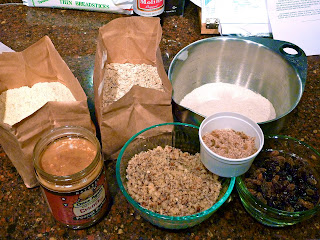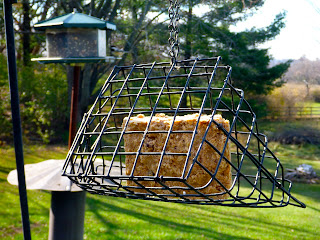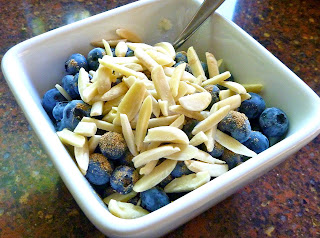As the life energy of spring emerges I am reminded of the soul nourishing rewards of eating with the seasons. After months of rich and heavy stews, meats, and casseroles the anticipation of light, fresh, green food is almost more than I can bare. On a very basic level, eating seasonally keeps life interesting. Just when you've had enough of one season's bounty, you can move on to enjoy the next. It's a continuous cycle of anticipation, excitement, joy, & comfort. What an amazing and easy way to cultivate gratitude in our lives. Trust me, eating locally grown asparagus in the upcoming months will mean so much more to you when you DON'T eat it out of season the rest of the year. You will experience a joy you never knew existed in something so simple.
I typically gather a lot of inspiration, gratitude, and joy from weekly trips to our local farmer's markets during the growing season. Thanks to talented artisans, freezers, coolers, green houses, hoop houses, and hydroponics we are able to enjoy a still rich indoor winter market outside of that season. A recent trip to our indoor Dane County Farmer's Market proved to be just the boost I needed to pull me out of my winter doldrums. Winter spinach from Snug Haven Farm, mixed salad greens from Gitto Family Farm, fresh sprouts from Garden To Be, fresh herbs, and even tomatoes and cucumbers from Canopy Gardens had made their debut!
The salad greens and sprouts I bought presented the perfect opportunity for me to tell you about my latest discovery...vacuum sealing greens! Thanks to social media, I learned about using tools I've had in my kitchen for years, but have never used...the jar sealing adapters for my Foodsaver Vacuum Sealer. People ask me often about vacuum sealers, whether or not I have one and whether or not I use it. Yes I have one, yes I use it, and yes I think you should have one too. It has been an essential tool in my long term food storage arsenal. And now that I've rediscovered my jar sealing adapters I am looking forward to prolonging the freshness of everything I store in jars...e.g. dried herbs, dried vegetables, loose leaf tea, dried beans, and dried fruits. See, my excitement has me veering off my point...which is vacuum sealing fresh greens to preserve their longevity in my fridge.
My first experiment with this was to do something similar to the salad-in-a jar post from a social media site. I had red cabbage, green cabbage, onions, and carrots all in cold storage waiting to be eaten from this past fall. A coleslaw definitely seemed to be in order, but instead of mixing the whole thing together at once and ending up with a soggy bowl of leftover slaw for the week, I kept the shredded veggies and dressing separate, only to be mixed a few hours before consuming. As per the salad-in-a-jar idea, I put dressing in the bottom of a wide mouth pint jar and then stacked my slaw fixings on top. I put together a few of these as lunch sides for myself through the week. Then using my canning lids and the vacuum sealer I sealed them up tight. When it was time for me to eat one of these jars, I set it upside down in the morning and then at lunchtime gave it a good shake. Popped off the lid and enjoyed a lovely fresh coleslaw. (Unfortunately I failed to take photos of any of this...please pardon the lack of pictures.)
For the remaining freshly shredded slaw veggies, I piled them into a large half gallon canning jar and sealed it up tight as with the pint jars. Part of my experiment was to see how long I could hold this stuff in this way and keep it fresh. My slaw mix also included some freshly chopped parsley just to up the ante a bit. I kept an eye on it so as to be sure to eat it as soon as it started to show signs of aging. After two weeks, everything in the jar, including the chopped parsley, still looked beautiful. I decided it was time to eat it anyway, as it was taking up too much space in my fridge. I popped the lid and it definitely had an odor of aging cabbage, but everything looked and tasted great.
Clearly this was a very unscientific experiment, but I was impressed by the results. I had a "control" bowl (of sorts) of shredded raw beets in a conventional bowl that I made the same day as the slaw. The beets were grey and pretty unhappy looking after a week. They were sacrificed to the compost bin. I have since discovered a whole community of food-in-a-jar eaters and am looking forward to finding more fun food ideas. (I found a great blog post by Salad in a Jar with trouble shooting tips on vacuum sealing jars.)
I am currently trying this storage method on the fresh mixed salad greens and fresh sprouts that I bought last week at the farmer's market. One week and so far so good! When I consider how much money I spend on these locally grown fresh items, finding a way to prolong their storage makes me happy and saves me money.
Other things that make me happy this time of year are all of the fun activities emerging in our community. I have three exciting things to share with you for April (and forgive the short notice.)
SLOW FOOD MADISON ANNUAL MEETING
If you've always wondered what Slow Food Madison is about, what we're up to, where we're headed, and how you can play a part please come to our Annual Meeting tomorrow, April 7th, at Goodman Community Center. The celebration is open to the public and will run from 11:00 am to 1:00pm. We will have some talented local food producers sampling their wares from 11:00-11:30 and the meeting will run from 11:30ish - 1pm.
MADISON FOOD CAMP
Madison Food Camp on Saturday, April 13th. This event is put on in partnership with Slow FoodMadison and is super cool. It's based on the idea that we don't need experts to teach us how to dothings for ourselves. We all have knowledge, talents, and experiences to share. It's about neighbors helping neighbors, and in this case, the topics for learning revolve around food. Raising bees, making beer, starting a garden, making yogurt, smoking meat and so much more! The early bird price is sold out, but the standard price of $15 is still a crazy bargain. Space is limited, so check it out and register today!
"FARM FRESH & FAST" COOKBOOK PRE-SALE
FairShare CSA Coalition (formerly MACSAC), is releasing an exciting new cookbook called "Farm Fresh & Fast". FairShare is the publisher of the longstanding cookbook "From Asparagus to Zucchini", which is now in it's third edition. "A to Z" has been my primary vegetable recipe resource for years and is at the top of my list as a gift I give to friends and family who are new to gardening or who are interested in healthier eating. Not only is it filled with great recipes, but it also includes wonderful information and tips about each vegetable regarding harvesting, processing, and storage.
In 2011 FairShare put a call out to the community for recipe submissions to be considered for their new cookbook. A few months ago I was delighted to get an email telling me that the recipe I submitted for consideration was accepted and will appear in their new cookbook! I was and am very excited. As a contributor I recently had an opportunity to page through a mock up of the new book. It is beautiful and full of even more amazing information. They have come up with some great ways to help inspire us all to be more creative in our own kitchens. And, even better, they've included food groups beyond vegetables in this book. Including a cocktail section with submissions from some of the best mixologists in Madison!! I am a huge fan of all that FairShare does for our community and family farms, and am already a huge fan of this new cookbook. My recipe being published is just icing on the cake. FairShare is offering a pre-order discount of the new book for $20 (30% savings), but the offer ends April 15th...so order yours now!! You won't be sorry.
What's up next for me? My favorite spring vegetable is wild ramps, and my bucket list includes learning how to forage for my own. Maybe this will be my year! What food item are you looking forward to most this spring? And, have you ever gone foraging for your own?
Book Give-Away
As a thank-you for reading and sharing my blog with others, I'd like to give away a copy of FairShare's new cookbook, "Farm Fresh & Fast". Post a response below to my question above and I'll draw a winner when the book is released, hopefully in May. (And, if you order a book, but then win one here...don't fret, you will then have the perfect gift for someone special in your life!)
































